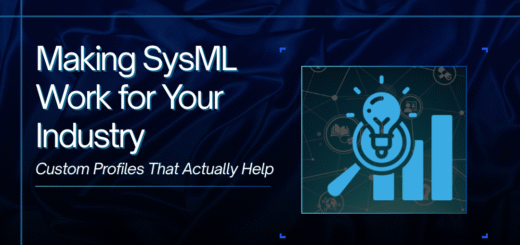The Future of Learning at Work: How AI is Tailoring Growth for Every Employee
Gone are the days of dull, one-size-fits-all training sessions. In today’s fast-moving job market, employees need learning that adapts to them—not the other way around. Companies that get this right don’t just check a box for “training completed”; they build teams that stay sharp, engaged, and ahead of the curve.
Enter AI. It’s quietly transforming corporate learning from a chore into a dynamic, personalized experience. No more generic slide decks or mandatory seminars that put everyone to sleep. Instead, smart systems now analyze what each employee needs, how they learn best, and where they’re headed—then deliver exactly the right lessons at the right time.
How AI is Making Learning Feel Like It’s Made for You
1. Pinpointing What You Actually Need to Learn
Most training fails because it’s guessing at what skills matter. AI cuts through the noise by comparing an employee’s current abilities with what their role—or next role—demands.
Real-world example:
At a mid-sized marketing firm, an AI tool noticed junior analysts were great at pulling data but struggled with storytelling. Instead of forcing them through a generic Excel course, it recommended a “Data Visualization for Impact” module. Six months later, client reports were clearer, and promotions followed.
How it works:
The system scans performance reviews, project outcomes, and even industry trends to spot gaps before they become roadblocks.
Try this prompt with your AI tool:
“Show me the top 3 skills missing in our sales team compared to high performers in their roles.”
2. Learning That Moves at Your Speed
Ever sat through training where half the room was bored and the other half was lost? AI fixes that by adjusting in real time.
Real-world example:
A hospital’s compliance training used to be a slog—nurses and admin staff had to sit through the same 4-hour session. Now, an AI platform lets fast learners test out of sections they know, while others get extra practice on tricky regulations. Completion rates shot up, and so did retention.
How it works:
Like Netflix’s “Recommended for You” but for learning, the AI tweaks the path based on quiz scores, time spent on topics, and even how often someone revisits material.
Try this prompt:
“Adjust our safety training so warehouse staff who ace the first quiz skip ahead to advanced protocols.”
3. Smarter Course Suggestions (No More Wasting Time)
Instead of scrolling through a clunky learning portal, employees get a shortlist of courses that actually align with their goals.
Real-world example:
A customer support rep at a tech company kept getting prompts for coding courses—until AI noticed her 1:1 feedback praised her conflict resolution skills. Next recommendation? A “Leadership in High-Pressure Environments” workshop. She’s now a team lead.
How it works:
AI cross-references career aspirations, peer feedback, and even which skills are rising in demand across the company.
Try this prompt:
“Recommend courses for engineers who want to move into people management, not just technical upskilling.”
4. Instant Feedback That Actually Helps
Waiting weeks for a course certificate tells you nothing. AI gives real-time insights—like a coach whispering tips mid-game.
Real-world example:
A financial services firm uses AI simulations for client negotiations. If a trainee leans too hard on jargon, the system flags it immediately and suggests simpler phrasing. New hires now reach proficiency twice as fast.
How it works:
AI compares actions (like quiz answers or simulated decisions) against best practices, then highlights missteps in the moment—not weeks later in a PDF report.
Try this prompt:
“After each module, give learners one ‘quick win’ they did well and one actionable tip to improve.”
Where This is Working Right Now
- Retail: Store associates get bite-sized product training before shifts, tailored to what customers asked about yesterday.
- Tech: Developers automatically get nudged to learn new frameworks as project needs shift.
- Manufacturing: AI spots which machine operators need safety refreshers before audit season hits.
Prompts to Steal for Your Team
- “Which roles in our company have the biggest skill gaps compared to industry standards?”
- *”Design a 30-day upskilling plan for our customer service team, based on last quarter’s feedback.”*
- “Alert managers when their team’s training engagement drops below average.”
The Bottom Line
AI isn’t replacing HR or L&D teams—it’s giving them superpowers. By making learning hyper-relevant, companies stop wasting time on forgettable training and start building workforces that grow with the business, not behind it.
The best part? Employees actually want to learn this way. When training feels like it’s designed for you, it’s not an obligation. It’s an opportunity.


